Salinity Management Guide
Problems involving turfgrasses
Problems related to soil permeability, drainage, and aeration deficit
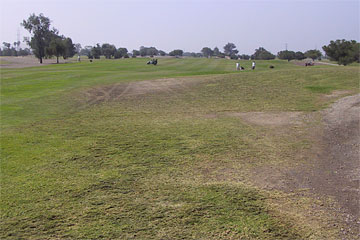 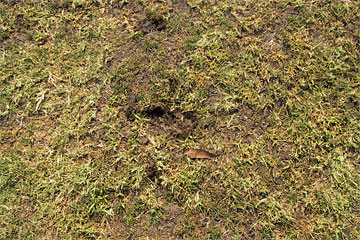
Photos courtesy of Ken Tanji. |
Symptoms: Bermudagrass fairway at the Victoria Golf Course exhibits signs of damage (two views: landscape and close-up). Diagnosis: The dispersed soil organic matter and blackened areas result from 1.45 meq/L of residual sodium carbonate in the recycled water used for irrigation. Solutions: The golf-course superintendent installed an in-line water conditioner that acidifies the recycled water with n-PHURIC acid, bringing the water to pH 6.5 and resulting in significant improvements in the performance of the turfgrass. |
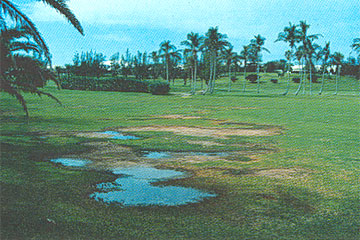
Photo courtesy of Carrow and Duncan. |
Symptoms: After irrigation, standing water remains in low bare spots. Diagnosis: Slow water infiltration as a result of sodic soil. Solutions: Improve water infiltration by blending irrigation water with water low in sodium but somewhat higher in total salinity (to reduce the permeability hazard). Apply calcium amendment to reclaim sodic soil. |
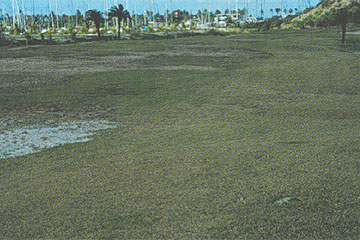
Photo courtesy of Carrow and Duncan. |
Symptoms: Bermudagrass fairway exhibits water stress on one side in this photo (the right hand side), as well as poor drainage in low lying areas on the other side (left hand side). Diagnosis: The water stress results from high soil salinity, which makes soil water less available to the grass. The ponding of water results from low soil permeability. Solutions: Leach high-salinity soil located to the right. Apply calcium amendment and leach to improve soil permeability and to reclaim the sodic soil to the left. The low lying area of this fairway requires subsurface drainage. |
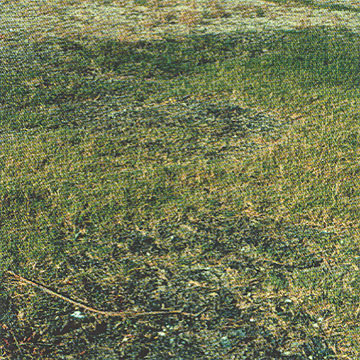
Photo courtesy of Carrow and Duncan. |
Symptoms: Turfgrass severely damaged in the area covered by a black organic mat. Diagnosis: This soil was determined to be sodic ("black alkali soil"). The excess sodium dispersed the organic matter, forming the black mat. Solutions: Reclaim the sodic soil by applying calcium or acid-forming amendment and by leaching with excess water and providing adequate drainage. |
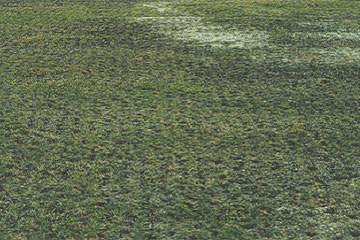
Photo courtesy of Carrow and Duncan. |
Symptoms: Poor turf performance. Diagnosis: Slow water penetration in this sodic soil. This site is suffering from water ponding in lower areas. Solutions: Though the turf was cored to 3-inch depths to aerate the soil and enhance water infiltration, water continues to pond. Further steps are needed. Reclaim sodic soil by applying calcium amendment, such as gypsum, and, possibly, by reducing application of water. |
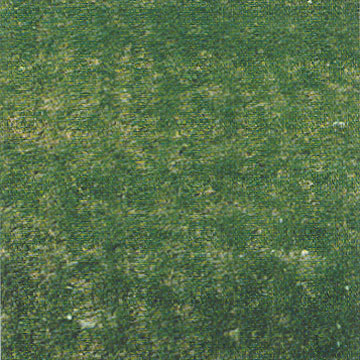
Photo courtesy of Carrow and Duncan. |
Symptoms: This landscape was suffering from soil aeration problems and was aerated by rolling it with soil-coring equipment two weeks ago. Diagnosis: A marked improvement is noted in the performance of the turfgrass growing on sodic soil. Solutions: In some instances, cultivation with soil core aerator on sodic soils may be an appropriate management option. |
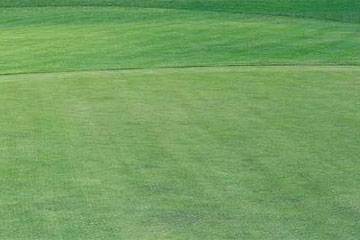
Photo courtesy of Bahman Sheikh. |
Symptoms: Slight discoloration (browning) of turfgrass at Pebble Beach Golf Course. Diagnosis: The golf-course superintendent attributes the browning to recycled water containing high sodicity. Solution: Apply a calcium amendment, such as gypsum, then leach. |
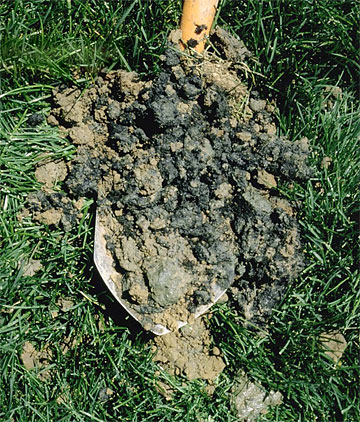
Photo courtesy of HortScience, Inc. |
Symptoms: Blackened soil beneath turfgrass. Diagnosis: Although the grass does not appear to be stressed, the black soil is indicative of anaerobic soil conditions. Solutions: Improve the soil's permeability and its ability to drain by aerating with a soil corer or by applying a calcium soil amendment. Reduce watering, too. |
| « Previous page | Next page » |